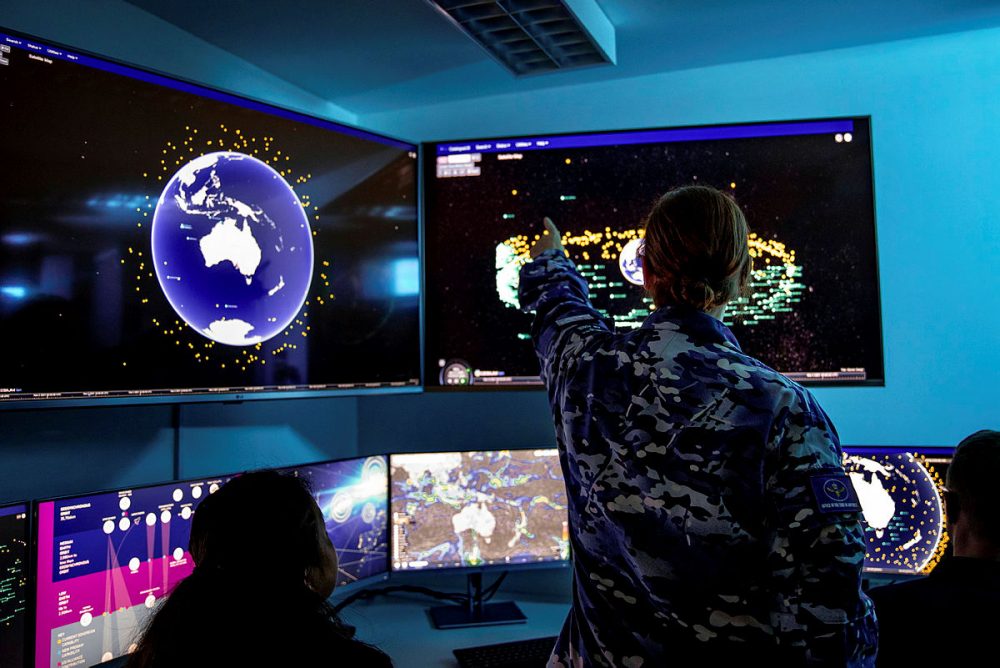
Last September, the Australian government announced a review of defence innovation, science and technology following six years of operation of the Defence Innovation Hub.
This news was quickly trumped when a mere three days later Prime Minister Scott Morrison unveiled the AUKUS pact and the significant news that Australia would acquire nuclear-powered submarines. The dry topic of defence innovation has barely seen further discussion since.
Yet, in announcing the review, Defence Industry Minister Melissa Price noted that it was commissioned because the defence innovation system ‘is not performing as well as I would like and we need to know what the solutions are to solve the challenges in this area’.
So, what is wrong with Australia’s defence innovation enterprise? Do we need an Australian version of the US Defense Advanced Research Projects Agency? More Makerspaces? Greater engagement with the innovation experimentation groups in individual army units?
No.
All we need is for the independent lead for the new review, David Peever, to retable his report from the 2015 first principles review.
The first principles review criticised Defence’s capability-development construct, in particular the disconnection between customers and the purchaser and unnecessary handover points—such as between the then Capability Development Group and the then Defence Materiel Organisation.
Importantly, the review recommended the establishment of a single, end-to-end capability-development system—what was later termed ‘One Defence’. The concept aimed to avoid great ideas, concepts and initiatives suddenly being thrown onto the desk of the Defence Materiel Organisation with little context, knowledge or support.
Attend any Defence Innovation Hub conference and the first thing you’ll hear from the spokesperson is that the hub doesn’t issue grants, it issues procurement contracts. While the hub may pride itself on this distinction, it’s also important to note that this organisation doesn’t procure or deliver capability for the Australian Defence Force. In fact, after five years, more than 148 contracts and $240 million spent, the impact from the hub’s procurement contracts is questionable. The organisation’s most recent annual report is very careful in its language on project outcomes, stating that completed projects are ‘now approaching the stage at which they could be considered for potential acquisition’ (emphasis added).
In its guidance notes to industry, the hub says that ‘acquisition decisions are made through separate processes that you [the applicant] will need to navigate’.
Why has so much time and money delivered so few if any tangible operational outcomes for the ADF?
Because, love it or loathe it, the only organisation that does capability acquisition for Defence is the aptly named Capability Acquisition and Sustainment Group.
CASG needs to be the first stakeholder in the assessment process, not the last—and not while holding the latest great idea and being told to ‘consider’ the ‘potential’ of acquiring a product in the future … maybe.
The Defence Innovation Hub doesn’t support an end-to-end capability function as recommended by the first principles review, so it’s no wonder industry is frustrated with the process of engaging in the defence innovation system. The current processes don’t enable innovative products and sovereign business to scale up—and the best way to scale up is through a purchase order from a major acquisition project.
Reshaping this system doesn’t require massive restructuring or burdensome administrative costs; it can exploit the existing opportunities in the defence capability life cycle. We don’t need to dilute our relatively low defence spending and create our own DARPA. Instead, capability managers must drive innovation in CASG and the Defence Science and Technology Group by moving early-stage technology out of the lab and into the hands of the warfighter as an acquired, sustained capability.
The chief defence scientist—who incidentally is the capability manager for innovation—has made great progress through the STaR Shots initiative. But more can be done for what the defence transformation strategy calls ‘relatively lower-risk incremental innovation from industry technology’.
The defence capability manual recognises that ‘clear and coordinated innovation pathways that bridge the gap between early-stage technology development and acquisition are essential to create a more agile and proactive approach to capability development and sustainment’.
To facilitate those innovation pathways, Defence needs to enforce the ‘One Defence’ concept throughout the organisation and align the Defence Innovation Hub with CASG.
That should entail the capability managers directing CASG to publish capability problems and technology needs for future acquisition projects. (If you think it can’t be done, I would respectfully refer you to US Special Operations Command annual Special Operations Forces Industry Conference.)
The alignment of the Defence Innovation Hub to the technology needs of upcoming acquisition projects will assists CASG to break down its barriers to innovation and increase the speed of acquisition. A recent Australian National Audit Office report on Defence’s major projects identified schedule slippage as a product of ‘the underestimation of both the scope and complexity of work, particularly for developmental projects’.
So let’s enable collaboration with industry by de-risking projects early in the capability life cycle and aligning innovation proposals with actual acquisition needs—and reduce incidents like the Defence Innovation Hub investing $7.35 million in an alternative to rigid-hull inflatable boats when CASG had already committed $53.3 million to procuring 41 vessels of an existing solution.
This alignment will greatly benefit both Defence and defence industry in strengthening partnerships and provide a more agile and proactive approach to capability development and sustainment.

